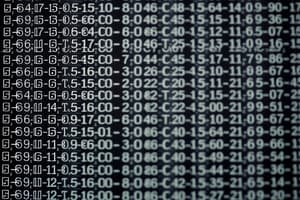Podcast
Questions and Answers
How are the elements of a matrix typically represented?
How are the elements of a matrix typically represented?
- xyz
- aij (correct)
- 123
- ABC
What determines the size of a matrix?
What determines the size of a matrix?
- Number of rows and columns (correct)
- Color of the elements
- Element values
- Matrix dimension
In which fields are matrices commonly used?
In which fields are matrices commonly used?
- Physics, engineering, computer science (correct)
- Geography, astronomy, botany
- History, literature, music
- Cooking, painting, pottery
What are matrices used for in linear algebra?
What are matrices used for in linear algebra?
How do matrices help in solving systems of linear differential equations?
How do matrices help in solving systems of linear differential equations?
What do matrices represent in cryptography?
What do matrices represent in cryptography?
What are matrices used for in cryptography?
What are matrices used for in cryptography?
When can two matrices be added or subtracted?
When can two matrices be added or subtracted?
What is the condition for a matrix to be inverted?
What is the condition for a matrix to be inverted?
What are some operations that can be performed on matrices?
What are some operations that can be performed on matrices?
What do the elements of a new matrix resulting from multiplication represent?
What do the elements of a new matrix resulting from multiplication represent?
How are matrices essential in solving systems of linear differential equations?
How are matrices essential in solving systems of linear differential equations?
Flashcards are hidden until you start studying
Study Notes
Matrix
A matrix is a rectangular array of numbers, symbols, or expressions, arranged in rows and columns, used to represent linear equations or to solve systems of linear equations. Matrices can also be used in various fields, such as physics, engineering, computer science, and cryptography, to represent and manipulate data, solve problems, and gain insights into complex systems.
What is a Matrix?
A matrix is a collection of elements arranged in rows and columns. It is typically represented by capital letters in bold, such as A. The elements of a matrix are represented by aij, where i and j are the row and column numbers, respectively. The size of a matrix is determined by the number of rows and columns it contains, which are denoted as m x n, where m is the number of rows and n is the number of columns.
Applications of Matrices
Matrices are used in various scientific and mathematical fields, including:
Linear Algebra
Matrices are used to represent linear transformations, which are operations that change one vector into another by scaling, rotating, or reflecting it. Matrices are also used to find the inverse of a linear transformation, which is the operation that undoes the transformation.
Differential Equations
Matrices are used to represent the coefficients of a system of linear differential equations, which are equations that describe how a function changes over time. Matrices are used to find the general solution of a system of linear differential equations, which is a function that can be modified to represent any specific solution.
Cryptography
Matrices are used in cryptography, the practice of secure communication, to represent and manipulate encryption and decryption algorithms. Matrices are used to represent matrices, which are large sets of numbers that can be used to represent and manipulate encryption and decryption algorithms.
Matrix Operations
There are several operations that can be performed on matrices, such as addition, subtraction, multiplication, and inversion. These operations are used to find the sum, difference, product, or inverse of two matrices, respectively.
Addition and Subtraction
Two matrices can be added or subtracted if they have the same size and same elements in the corresponding positions. The result is a new matrix with the same size and the sum or difference of the corresponding elements.
Multiplication
Two matrices can be multiplied if the number of columns in the first matrix is the same as the number of rows in the second matrix. The result is a new matrix with the same number of rows as the first matrix and the same number of columns as the second matrix. The elements of the new matrix are the sum of the products of the corresponding elements in the first and second matrices.
Inversion
A matrix can be inverted if it is square and non-singular, which means it has a unique solution for any linear equation. The inverse of a matrix is a new matrix that, when multiplied by the original matrix, results in the identity matrix.
Conclusion
Matrices are powerful mathematical tools that are used in various scientific and mathematical fields to represent, manipulate, and solve problems. Matrices can be used to represent linear equations, solve systems of linear equations, and represent and manipulate encryption and decryption algorithms in cryptography. There are several operations that can be performed on matrices, such as addition, subtraction, multiplication, and inversion, which are used to find the sum, difference, product, or inverse of two matrices, respectively.
Studying That Suits You
Use AI to generate personalized quizzes and flashcards to suit your learning preferences.




